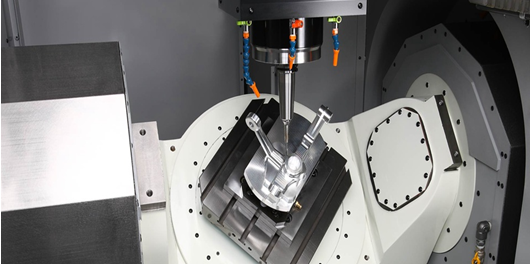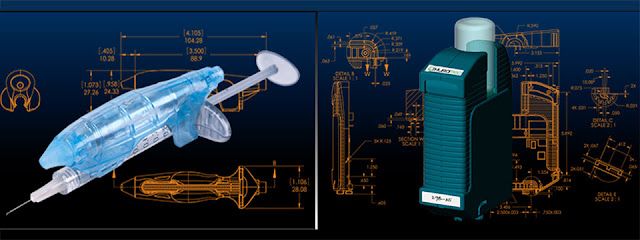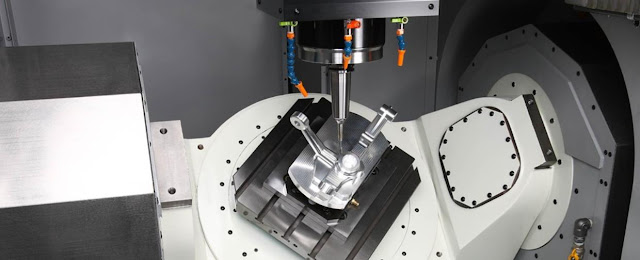Modern mold technology
Modern mold making technologies and
trends
The principle of electrical discharge machining
involves local evaporation of material under high voltage. The main advantage
here is the ability to machine any type of electricity-conducting material with
no regard to its strength or machin ability. The precision and surface finish of
that method is good enough for most commercial molds. Another way to increase
the speed of creating molds is to use SLS-printing. SLS-printing is an
innovative way of sintering metal powder layer-by layer to produce a part
without any need of tools and fixtures. So, creating a 3D-printed work piece
drastically decreases the amount of machining that is required to produce a
mold. It also decreases the amount of material waste from around 50-60% to 20%
which is very high. In case of producing parts from a low melting temperature
plastics, where metal molds are not needed, it is possible to 3D-print the part
mock up using SLA-printing and then create a mold based on that part (for
example creating soft rubber molds).
As
of now, mold technology is divided into a number of different molding types:
·
Injection molding. This one is the
classic process where molten plastic is injected into the mold under pressure
and is then crystallized;
· Intrusion molding. The process here
is different from the first one in the way of feeding plastic into the system.
The Pressure is lower but the material is supplied by a special gear mechanism
which works during the whole process and adds more material to compensate for
the shrinkage during crystallization. That is really important when creating
parts with wide walls.
·
Gas-Injection molding. This
modification of injection molding fills the mold up to 75-80% at first and then
blows some inert gas into the mold. The gas is under pressure so that the
plastic fills all the nooks and niches of the mold better. After a few minutes,
the gas is pumped out and the mold is filled with plastic completely. This type
of Injection molding is great for parts that have long and thin walls.
·
Combination Molding. This process is
almost completely like the classic injection with only one difference. Two
types of material are used. For the outer surface, one color or type of plastic
is used and the other one is for the inner surface. It brings many
opportunities to manufacture parts with different color or properties depending
on their surface.
So,
as you can see, the method of injection molding is well researched and
developed and depending on the type of part you make, one or the other method
will bring you better quality and lower cost of the product to be manufactured.
Modern molding technologies
So,
the mold has been created and the actual process of producing parts may be
considered. In most cases, it consists of a number of stages:
·
Preparation. This stage consists of
measuring the composition of plastic to be molded, colorant is added at that
stage and the whole substance is dried to prevent pores.
·
Machine tool setup. The molding
machine parameters such as temperature, pressure, molding time are chosen by
the operator and the mold is fixed into the machine.
·
Loading. Here, the required amount of
injection material (a mixture of plastic, special additives and colorants) is
loaded into the machine bunker.
·
Injection. This process consists of
heating the plastic until it melts and injecting it under pressure into the
mold.
·
Crystallization. This is the last
stage and the longest since the part must cool down to be removed.
As
a result of the process and removal of some additional structures required for
molding, a very precise part with fine surface finish that requires no or some
finishing postprocessing.
Conclusions
Manufacturing of plastic parts is a rapidly developing
industry. That is logical since more than 60% of current products consist of
plastic parts and Injection molding is the mechanism that allows a reliable and
repeatable creation of parts of the highest quality. Mold technology also has some
disadvantages, the main of them being the complexity and the large costs of
molds. This somewhat determines the area of its use: manufacturing identical
parts in large volumes. However, extensive work and research is being conducted
to negate this disadvantage. New technologies are being adopted to produce
molds, such as 3D-printing and EDM machining. New designing methods and
templates for making and modeling molds are being developed (most CAD|CAM|CAE
systems of high level have a special mode for designing and testing molds). All
of the work mentioned above moves the use of injection molding from a
technology of mass production into the industry of low quantity and custom
production.






Comments
Post a Comment